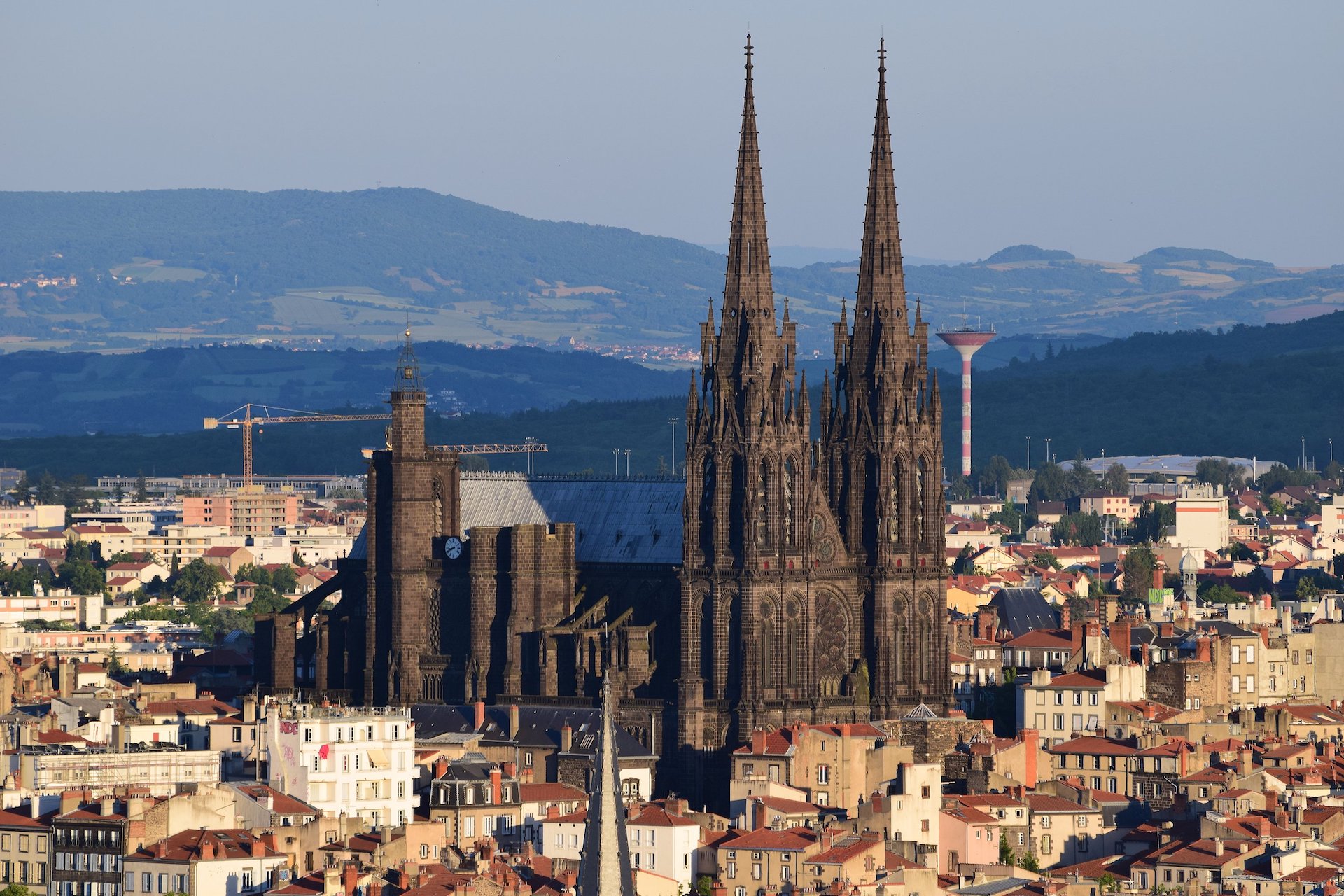We start stage 11 in Clermont-Ferrand where, in less than two weeks, the Tour de France Femmes avec Zwift starts as well. I can’t wait for the showdown between Annemiek van Vleuten and Demi Vollering but first let’s focus on Jonas Vingegaard and Tadej Pogačar and a cathedral that can’t be missed.
The great black Romanesque-Gothic cathedral, Notre Dame de l’Assomption, towers over Clermont-Ferrand. This 13th-century cathedral is an iconic sight, not least because of the special type of rocks that are used for its construction. This is a volcanic cathedral!
The complete walls and spires of the cathedral are constructed from blocks of black solidified lava, called Pierre de Volvic. Due to its hardness and texture, containing numerous, small, irregularly shaped bubbles (vacuoles), this basaltic rock is both a strong and lightweight material that is easy to sculpt. The master builders, starting in 1248, were lucky to have this excellent building material in their vicinity. It allowed them to design such a huge cathedral with slender and high towers and a lot of detail.
At 98 km from the line, we pass the town of Commentry. In the small hamlet of La Celle, part of Commentry, a famous Tour de France rider was born in 1876. Hippolyte Aucouturier, or Hercule the Terrible, won two stages in the 1903 Tour de France.
In 1904 he won his second Paris-Roubaix and was ready to get more stage wins or even the overall in the Tour de France, which was back then run with a points system instead of time. He did win four stages out of the six but here is where things get really wild.
That year, riders were attacked during the race. Halfway through the race, Maurice Garin, the winner of the first Tour de France in 1903 said: "If I'm not murdered before we reach Paris, I'll win the Tour de France again." The French rider had reason to be worried. Before the first stage ended in Lyon, he was attacked by four masked men in a car, who tried to knock him and nearest rival Lucien Pothier off their bikes before fleeing.
Between Lyon and St Etienne, while local rider Andre Faure was attacking on a climb, some 200 fans invaded the road to prevent the rest of the peloton from chasing him. "Kill them!" they shouted while race officials fired shots into the air to disperse the angry crowd. In the fight that followed, Garin injured his hand and Paul Gerbi was beaten up and left unconscious on the road.
Tension continued when the Tour reached Nîmes, in south-west France. A local rider named Payan had been disqualified a few days earlier but insisted on starting all the same. When Tour officials refused, more angry fans threw stones at the riders demanding that Payan be reinstated.
Between Bordeaux and Agen, nails were scattered on the road causing punctures. Henri Cornet even rode the last 40 km of the final stage with two flat tyres. Yet, the riders made it to Paris. Hippolyte Aucouturier won four stages and a fourth place in the GC. Maurice Garin won his second Tour de France. That seemed to be the end of the race but then there was some powerplay between Tour boss Henri Desgrange and the French Cycling Union.
In December of 1904 the French Cycling Union found the first four of the general classification guilty of various rule infractions like taking trains or receiving assistance from cars. The top four, including Aucouturier, were disqualified and some were even banned. The fifth-placed rider, 19-year-old Henri Cornet, got himself an unexpected victory. He is still the youngest winner to date.
Dejected, Tour boss Desgrange was ready to call it quits after two editions but he finally decided to carry on with the Tour. "We must continue the great moral crusade to clean up cycling and it is something only the Tour de France can achieve," he said.
Did we do a good job with this story?


